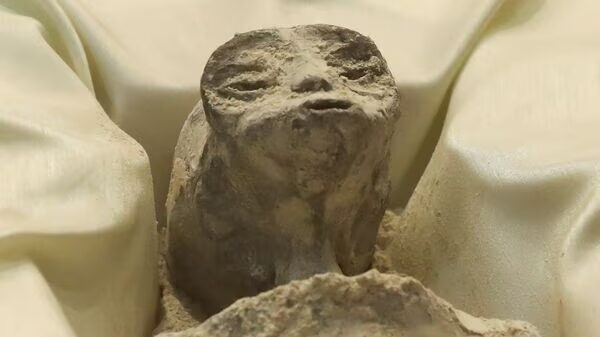Avi Loeb, a physicist affiliated with Harvard University in the United States, has recently reported the discovery of 50 minuscule spherical iron fragments retrieved from the depths of the Pacific Ocean. Loeb proposes that these fragments may potentially constitute material from an extraterrestrial spacecraft of interstellar origin.

Loeb connects this discovery to an incident in January 2014 involving a fireball. This celestial object, known as CNEOS 20140108 or IM1 (interstellar meteor), was initially observed as it traversed Earth’s atmosphere at a speed exceeding typical meteors before disintegrating over the South Pacific Ocean near Papua New Guinea. Data regarding this meteor is maintained by NASA’s Centre for Near Earth Object Studies (CNEOS).
However, the leap from observing a fireball to asserting it as evidence of an alien spaceship is indeed substantial. Questions arise concerning the foundation of Loeb’s claim and its credibility.
It is worth noting that we have previously encountered interstellar objects, such as the comet ‘Oumuamua, which passed through our Solar System. ‘Oumuamua’s trajectory was peculiar, deviating from the usual circular orbits of planets and elliptical paths of comets. Researchers traced its origin beyond the outer reaches of the Solar System. Although ‘Oumuamua’s shape was not directly observed, its unusual light reflection patterns suggested an elongated form, resembling a cigar or a plate when viewed from different angles.
In 2018, Loeb speculated in an article that ‘Oumuamua might not be natural but rather of artificial origin, possibly crafted by an extraterrestrial civilization. He advocated for continued exploration for interstellar debris within the Solar System.

In their pursuit of such debris, Loeb’s team delved into the CNEOS database, focusing on objects with unique orbital characteristics. This endeavor led them to the discovery of CNEOS 20140108, which they deemed an interstellar meteor (IM1) based on its high velocity. Loeb utilized computer models to trace the fireball’s path, pinpointing a specific region in the South Pacific where IM1’s debris might have settled. After conducting a dredging operation equipped with a powerful magnet, he now claims to have obtained material from IM1.
Nevertheless, the likelihood of these findings representing authentic interstellar debris, let alone remnants of an alien spaceship, remains uncertain.
The metallic spherules recovered measure approximately half a millimeter in diameter. While it is not implausible for such particles to originate from extraterrestrial sources, previous oceanic expeditions have unearthed similar cosmic spherules. Notably, the HMS Challenger expedition in 1872-76 yielded metallic droplets described as “cosmic spherules.” These spherical particles are formed when molten material from meteorites solidifies during their passage through the atmosphere.
However, identifying these spherules as extraterrestrial has become more challenging due to increased pollution on Earth over the past century. Industrial byproducts and vehicular emissions, which are often spherical and metallic in nature, have infiltrated the environment. Therefore, without comprehensive compositional analysis and comparison with meteorite and terrestrial pollutant data, conclusively designating them as extraterrestrial is difficult.
Furthermore, Loeb’s assertion that this material hails from interstellar space is contested. In reality, Earth already possesses a wealth of interstellar material, though not necessarily in the form collected by Loeb. This interstellar material comes in various forms, including organic molecules present in the interstellar medium—the space between stars. Stars themselves have contributed materials like tiny diamonds or sapphires, remnants of stars predating the Sun. These grains became part of the dust cloud that eventually formed the Solar System and were subsequently delivered to Earth via meteorites.
Loeb’s evidence for an extraterrestrial origin for the material, let alone an interstellar one, lacks robust support. While the composition of the spherules has been analyzed and found to consist mainly of iron with minimal nickel content, similar to meteors from our Solar System, this absence of nickel does not definitively confirm interstellar origin. It merely increases the likelihood of terrestrial contamination.
The most compelling evidence would be establishing an age for the spherules older than the Sun itself, indicating an interstellar origin. However, even this finding would not necessarily substantiate an artificial, as opposed to natural, origin for these materials. Determining the latter would require evidence beyond the current scope of analysis—perhaps something as distinctive as the signature of an alien engineer who constructed the spacecraft.

